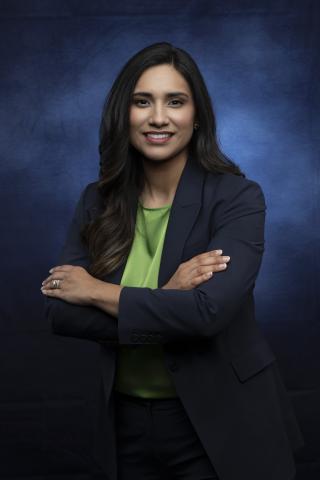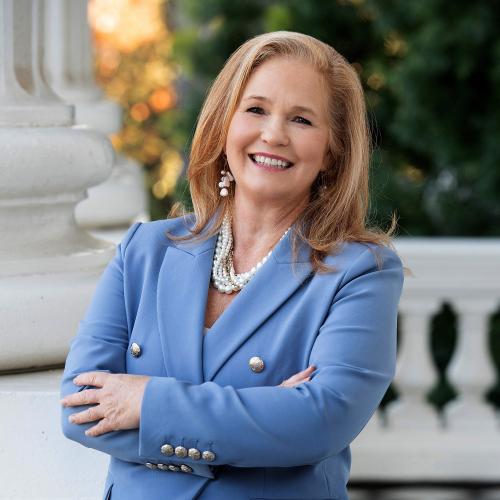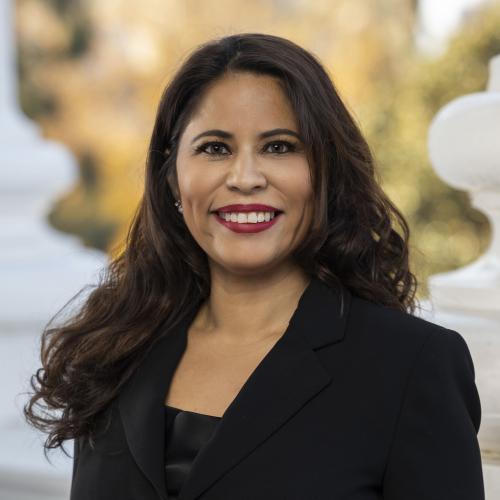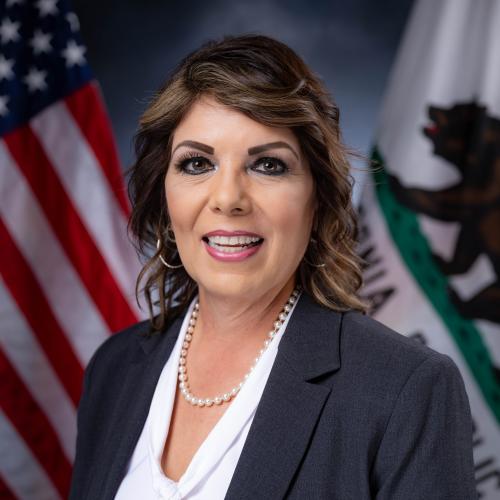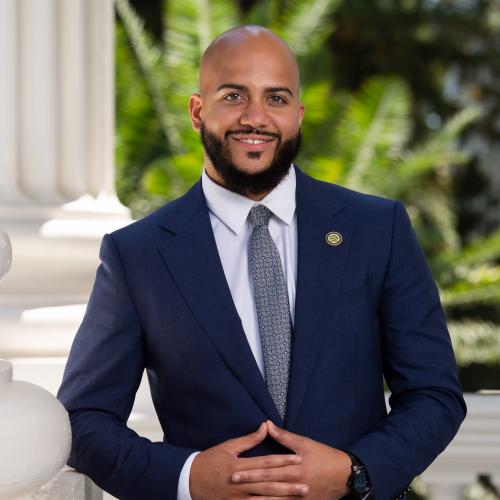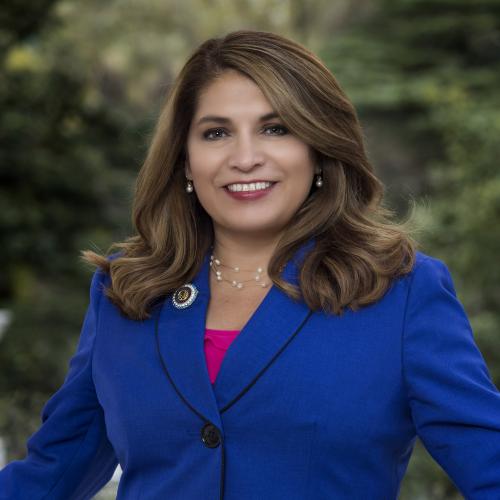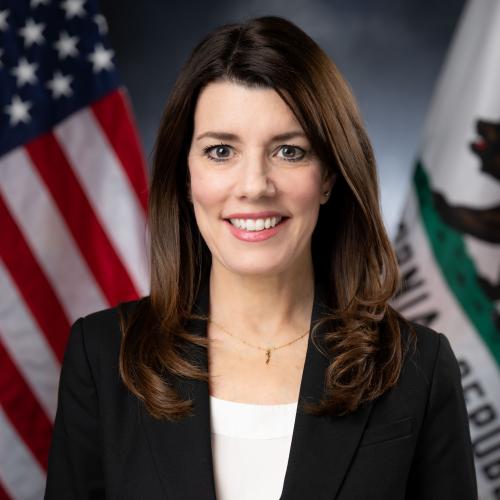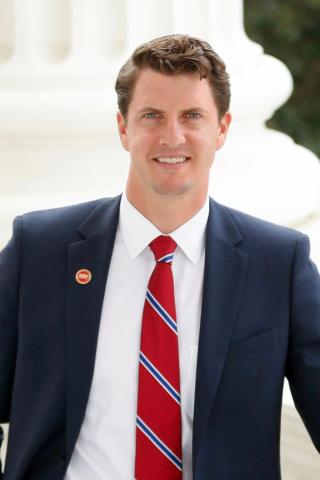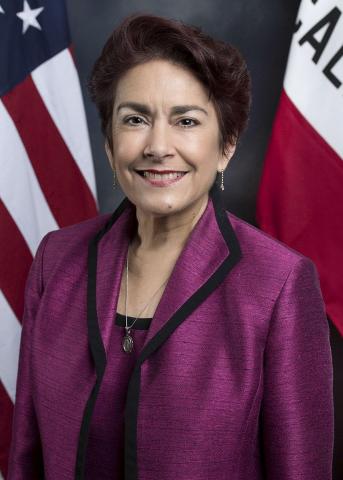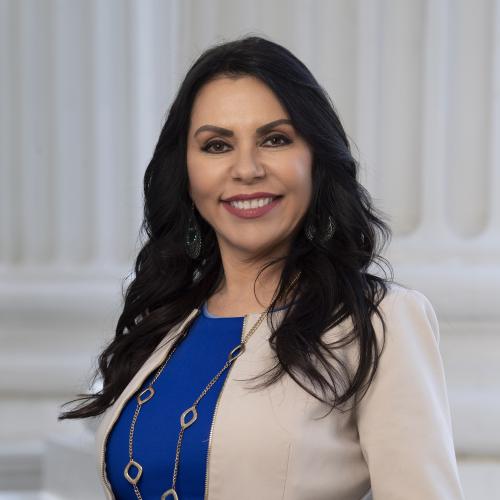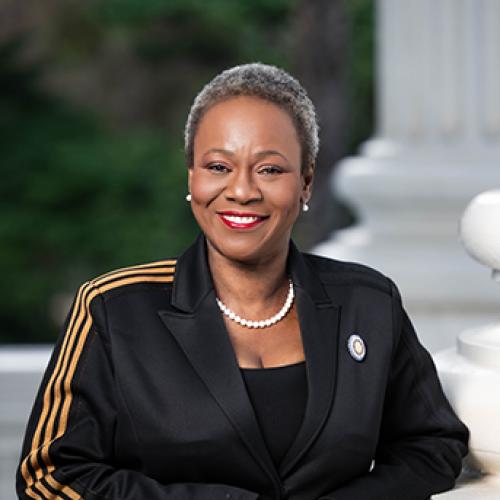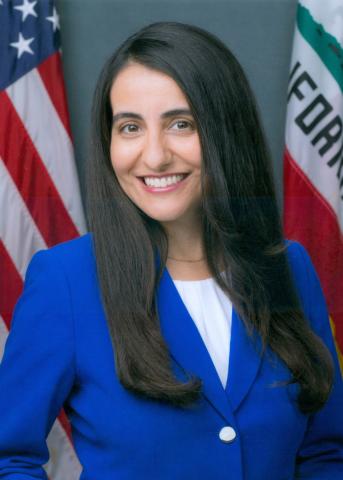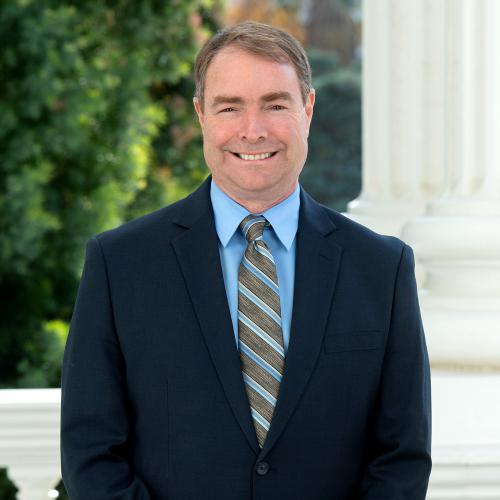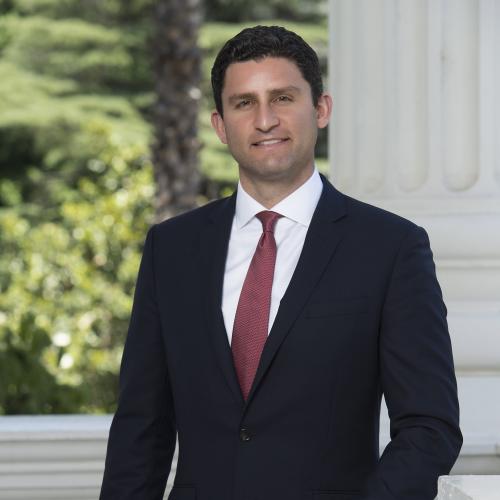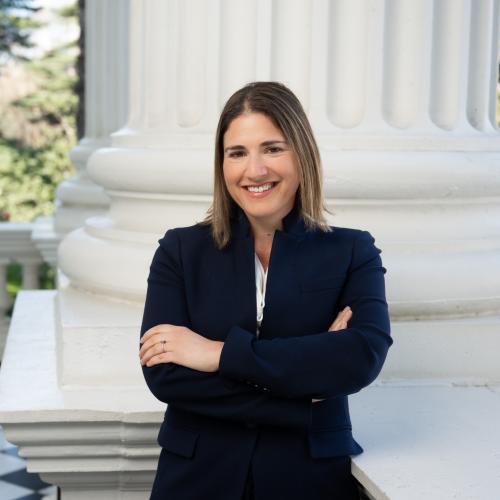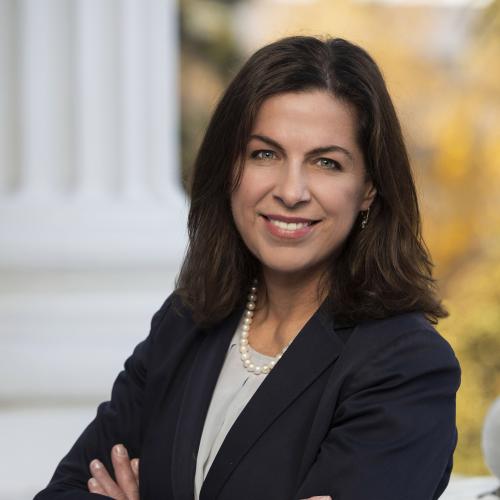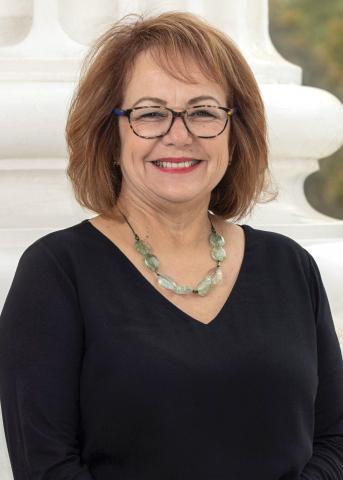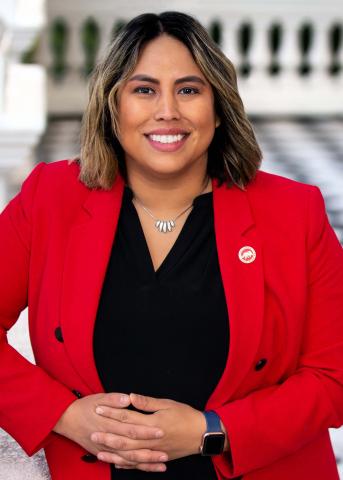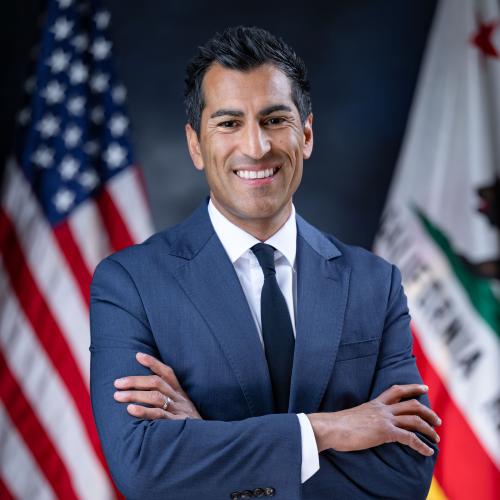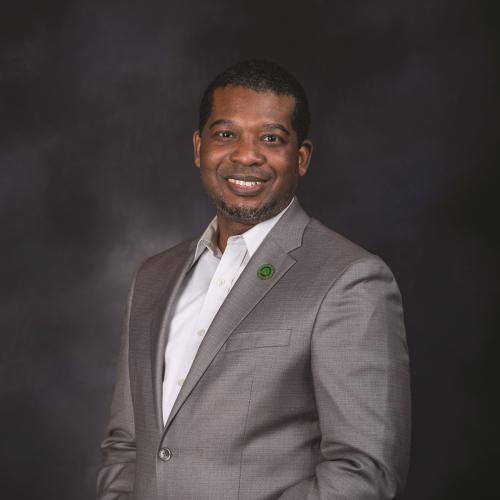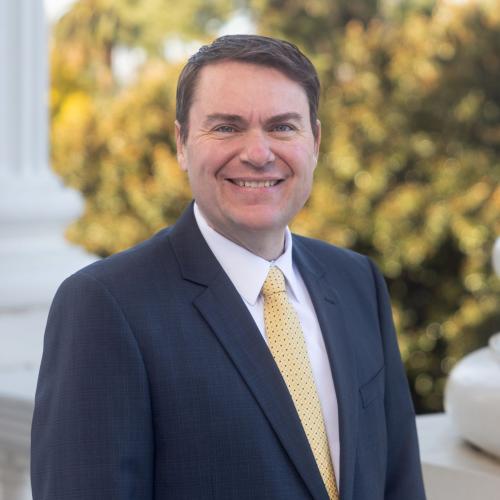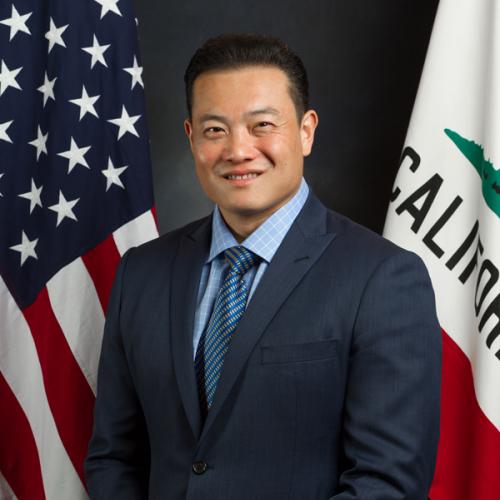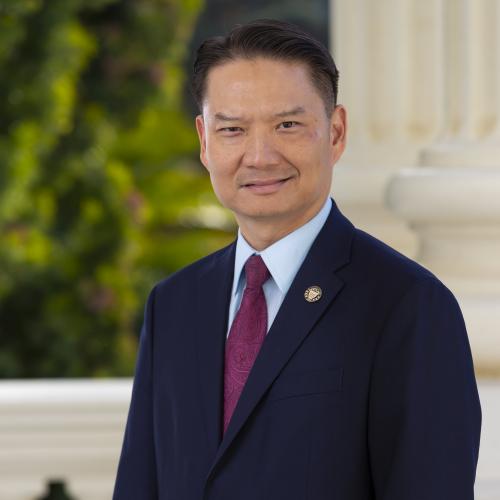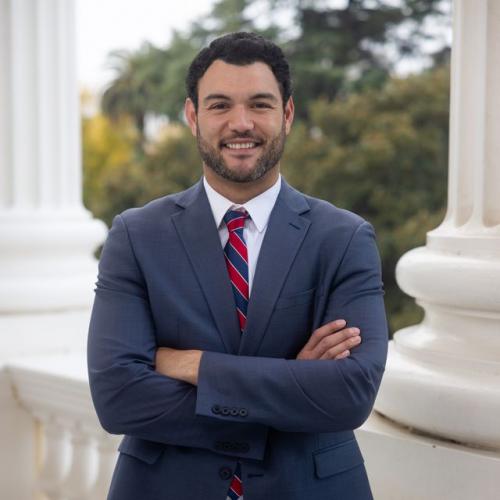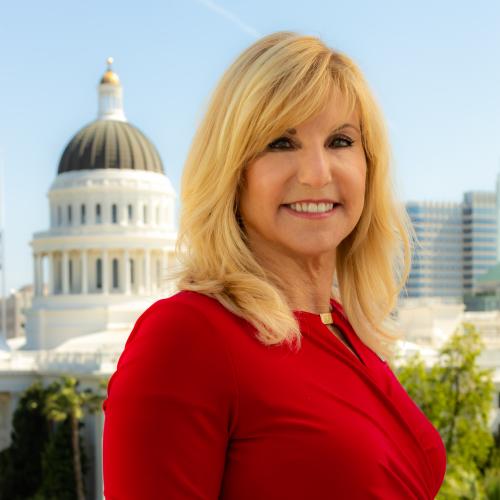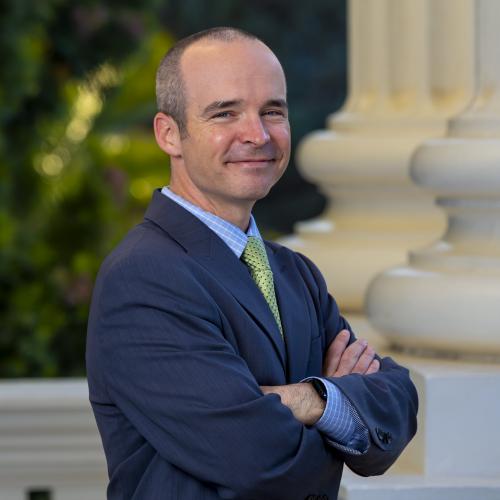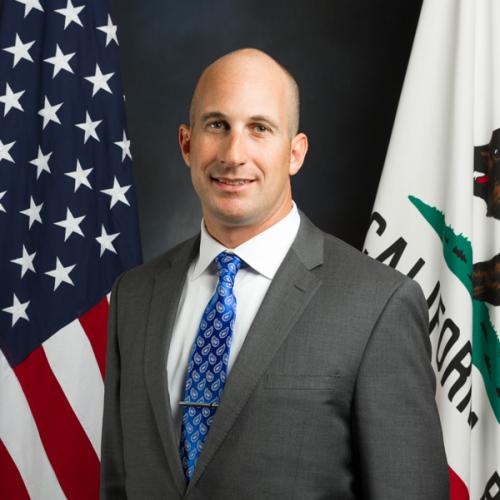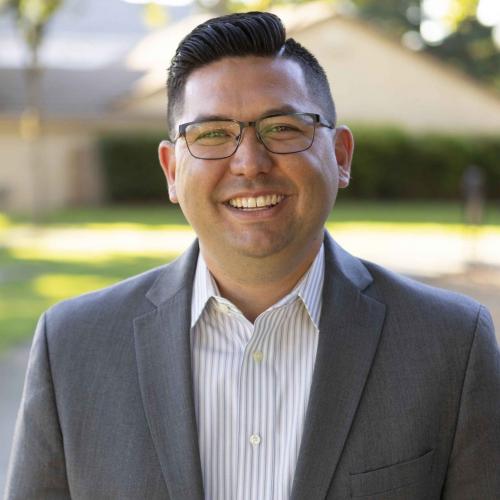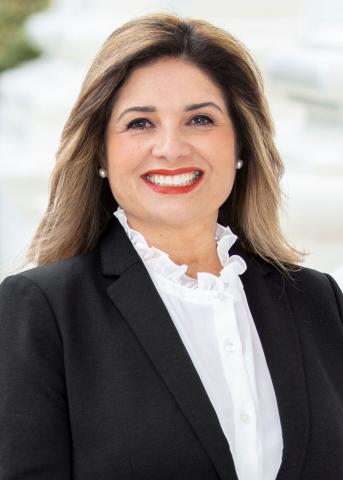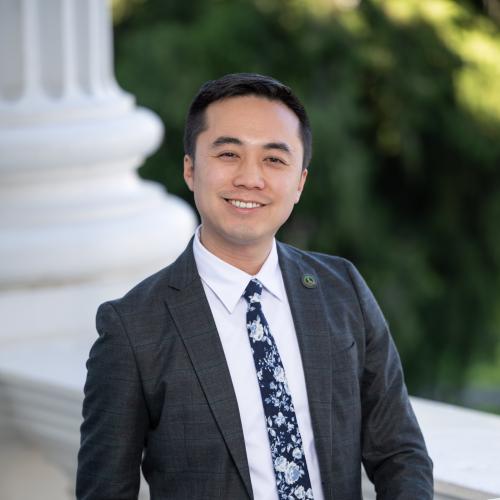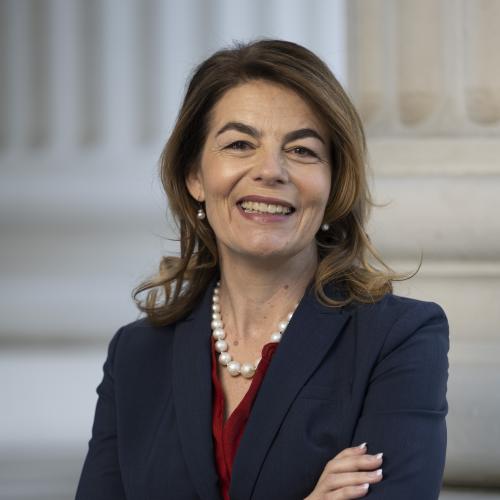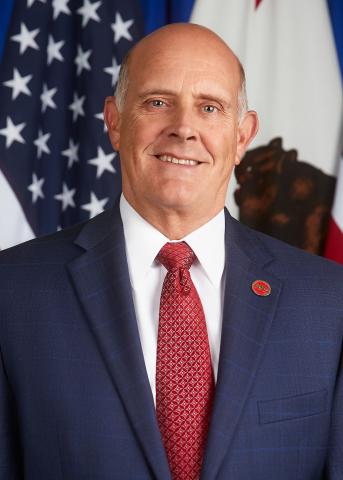Senate Bill
No. 280
CHAPTER 97
An act to add and repeal Chapter 1.5 (commencing with Section 8160) of Part 1 of Division 8 of the Elections Code, relating to elections, making an appropriation therefor, and declaring the urgency thereof, to take effect immediately.
[
Approved by
Governor
August 21, 2025.
Filed with
Secretary of State
August 21, 2025.
]
LEGISLATIVE COUNSEL'S DIGEST
SB 280, Cervantes.
Elections.
(1) Existing law authorizes a candidate for elective office to submit a petition containing a specified number of signatures in lieu of all or part of the fee for filing nomination papers. Existing law requires the Secretary of State to make forms for securing signatures available to each candidate commencing 60 days before the first day for circulating nomination papers, except as specified, and requires candidates to file in-lieu-filing-fee petitions at least 30 days before the close of the nomination period.
This bill, for the June 2, 2026, statewide direct primary election, would require the Secretary of State to make those forms available beginning December 19, 2025. This bill would require the Secretary of State to prepare a calendar
of key election dates and deadlines and requirements for the nomination of candidates by the date that the in-lieu-filing-fee petition forms are made available.
(2) Existing law requires each county elections official to provide the Secretary of State with specified information regarding the number of voters and their party preferences in the county and each supervisorial, Congressional, Senate, Assembly, and Board of Equalization district in the county on the 135th day before each direct primary election, with respect to all voters who are registered voters on the 154th day before the primary election. Existing law requires the Secretary of State to compile a statewide list of this information within 30 days after receiving it from each county elections official.
This bill would require the Secretary of State to determine, by December 19, 2025, whether it is feasible to include in the statewide list
described above the number of voters by party preference in each congressional district with respect to all voters who are registered voters on the 154th day before the June 2, 2026, statewide direct primary election. If the Secretary of State determines it is not feasible, the bill would not require that information to be included in the information provided by the counties and the compiled statewide list. The bill would require the Secretary of State to prepare a supplemental statewide list showing that information on a date specified by the Secretary of State, but not later than the 88th day before the June 2, 2026, statewide direct primary election.
(3) Existing law authorizes a candidate for elective office to designate that certain specified words appear below the candidate’s name on the ballot, including, among others, the word “incumbent.”
This bill, for the June 2, 2026, statewide direct
primary election, would prohibit a candidate for the office of Representative in Congress from choosing the word “incumbent” as a designation to appear on the ballot. The bill would make conforming changes relating to the deadline for a person to file nomination documents for an office if a current holder of the office does not file nomination documents. These provisions would become operative only if ACA 8 of the 2025–26 Regular Session is approved by the voters and another state adopts a new congressional district map that takes effect after August 1, 2025.
(4) The bill would repeal the provisions described in paragraphs (1) to (3) above on January 1, 2027.
(5) Existing law requires a constitutional amendment submitted to the people by the Legislature to appear on the ballot of the first statewide election occurring at least 131 days after the adoption of the proposal.
This bill would call a special election to be held throughout the state on November 4, 2025, and, notwithstanding the 131-day requirement, would require the submission of ACA 8 of the 2025–26 Regular Session to the voters at that special election. The bill would authorize a local election called on or before August 8, 2025, and scheduled to be held on November 4, 2025, to be consolidated with the statewide special election. The bill would require that the impartial analysis prepared by the Legislative Analyst for the state voter information guide for the special election include specified content regarding 2021 and 2025 congressional district maps.
The bill would specify the procedures under which the special election would be conducted. Counties that conduct all-mailed ballot elections using vote centers would be required to maintain at least one vote center for every 30,000 registered voters from November 1, 2025, to
November 4, 2025, and at least one vote center for every 60,000 registered voters from October 25, 2025, through October 31, 2025. Other counties would be authorized to consolidate polling places at a maximum ratio of one for every 10,000 registered voters.
The bill would appropriate an amount from the General Fund to the Controller for the actual and reasonably necessary costs for counties to conduct the special election, as determined by the Director of Finance. The bill would also appropriate an amount from the General Fund to the Secretary of State for the actual and reasonably necessary costs for the Secretary of State to administer the special election, as determined by the Director of Finance.
This bill would declare that it is to take effect immediately as an urgency statute.
Digest Key
Vote: 2/3 Appropriation: YES Fiscal Committee: YES Local Program: NOBill Text
The people of the State of California do enact as follows:
SECTION 1.
Chapter 1.5 (commencing with Section 8160) is added to Part 1 of Division 8 of the Elections Code, to read:CHAPTER 1.5. June 2, 2026, Statewide Direct Primary Election
8160.
This chapter applies only to the June 2, 2026, statewide direct primary election.8161.
For purposes of this chapter, “statewide direct primary election” means the June 2, 2026, statewide direct primary election.8162.
(a) Notwithstanding subdivision (b) of Section 8106, forms for securing signatures on an in-lieu-filing-fee petition shall be made available beginning December 19, 2025.(b) Notwithstanding subdivision (a) of Section 8106, the elections official shall reduce the required number of signatures on an in-lieu-filing-fee petition by the same proportion as the reduction in the number of days for the candidate to collect signatures on such a petition compared to the number of days for a candidate to collect signatures on a petition, as provided by subdivision (b) of Section 8106.
8163.
Not later than December 19, 2025, the Secretary of State shall determine whether it is feasible to include the number of voters, by party preferences, in each congressional district in the state in the statewide list compiled by the Secretary of State pursuant to subdivision (b) of Section 2187 with respect to all voters who are registered voters on the 154th day before the statewide direct primary election in accordance with paragraph (1) of subdivision (c) of Section 2187, and shall publicly announce that determination. If the Secretary of State determines that it is not feasible to include that information, all of the following apply:(a) Notwithstanding paragraph (5) of subdivision (a) of Section 2187, the information provided by the county elections official
pursuant to paragraph (1) of subdivision (c) of Section 2187 is not required to include the number of voters by political party preferences in congressional districts located in whole or in part within the county.
(b) Notwithstanding subdivision (b) of Section 2187, the statewide list compiled by the Secretary of State pursuant to that subdivision with respect to all voters who are registered voters on the 154th day before the statewide direct primary election shall not include the number of voters, by party preferences, in each congressional district in the state.
(c) (1) The Secretary of State shall prepare a supplemental statewide list showing the number of voters, by party preference, in the state and in each county, city, supervisorial district, Assembly district, Senate district, and congressional district in the state with respect to all voters who are
registered voters on a date specified by the Secretary of State. The date specified by the Secretary of State shall be as soon as is feasible, as determined by the Secretary of State, but not later than the 88th day before the statewide direct primary election. The Secretary of State shall compile this list within 30 days of receiving the information specified in paragraph (2). A copy of this list shall be made available, upon request, to any elector in this state.
(2) For the purpose of preparing the supplemental statewide list required by paragraph (1), each county elections official shall prepare the information referenced in subdivision (a) of Section 2187 and provide notice to the Secretary of State by a date specified by the Secretary of State.
8164.
Not later than the date that forms for securing signatures on an in-lieu-filing-fee petition are made available in accordance with Section 8162, the Secretary of State shall prepare a calendar of key election dates and deadlines and requirements for the nomination and election of candidates pursuant to California law, including this chapter.8165.
(a) Notwithstanding paragraph (2) of subdivision (a) of Section 13107, a candidate for the office of Representative in Congress shall not choose the word “incumbent” as a designation to appear on the ballot. This subdivision shall not be construed to prevent a candidate from choosing a designation of the elective office which the candidate holds at the time of filing the nomination documents, to which the candidate was elected by vote of the people in accordance with paragraph (1) of subdivision (a) of Section 13107.(b) (1) Section 8022, as it pertains to the office of Representative in Congress, shall not be operative.
(2) Notwithstanding Section 8020 or
any other law, a person shall have until 5 p.m. on the 83rd day before the statewide direct primary election to file nomination documents for the office of Representative in Congress, if either of the following is true:
(A) No person who currently holds the office of Representative in Congress delivered nomination documents for that district by 5 p.m. on the 88th day before the statewide direct primary election.
(B) Every person who currently holds the office of Representative in Congress who delivered nomination documents for that district by 5 p.m. on the 88th day before the statewide direct primary election also withdrew those nomination documents before 5 p.m. on the 88th day before the statewide direct primary election.
(c) This section shall become operative only if Assembly Constitutional Amendment 8 of the
2025–26 Regular Session is approved by the voters and takes effect, and subdivision (b) of Section 4 of Article XXI of the California Constitution, as added by that constitutional amendment, becomes operative.
8166.
This chapter shall remain in effect only until January 1, 2027, and as of that date is repealed.SEC. 2.
(a) (1) A special election is hereby called to be held throughout the state on November 4, 2025.(2) Notwithstanding Sections 10403 and 10406 of the Elections Code or any other law, a regular or special local election for the submission of any question, proposition, or office to be filled, which was called by a district, city, or other political subdivision on or before August 8, 2025, and scheduled to be held on November 4, 2025, may be consolidated with the statewide special election. A district, city,
or other political subdivision shall not call a special election to be held on November 4, 2025, after the effective date of this act.
(b) (1) Notwithstanding Sections 9040, 9043, 9044, 9061, 9082, and 9094 of the Elections Code or any other law, the Secretary of State shall submit Assembly Constitutional Amendment 8 of the 2025–26 Regular Session to the voters at the November 4, 2025, statewide special election.
(2) Notwithstanding Section 13117 of the Elections Code, the measure described in paragraph (1) shall be designated as Proposition 50.
(c) Notwithstanding Section 9054 of the Elections Code or any other law, if a city, county, or city and county is required to provide a translation of ballot materials in a language other than English, the Secretary of State shall provide a translation
of the ballot title and summary and the ballot label for the measure described in subdivision (b) to the city, county, or city and county not later than a date determined by the Secretary of State. The Secretary of State is not required to consult with an advisory body of language experts and nonpartisan organizations that advocate on behalf of, or provide services to, individuals that speak that language for these purposes. The translations of the ballot title and summary and the ballot label may be made available for public examination at a later date than the start of the public examination period for the state voter information guide, provided that the translations of the ballot title and summary and the ballot label shall remain available for public examination for eight days. A voter may seek a writ of mandate for the purpose of requiring the translations, or portions thereof, to be amended or deleted only within that eight-day period.
(d) Notwithstanding Section 13282 of the Elections Code or any other law, the public shall be permitted to examine the condensed ballot title and summary of the measure described in subdivision (b) for eight days. A voter may seek a writ of mandate for the purpose of requiring the condensed ballot title and summary, or portions thereof, to be amended or deleted only within that eight-day period.
(e) Notwithstanding Sections 303, 9050, and 9051 of the Elections Code or any other law, the ballot label for the measure described in subdivision (b) shall not include a list of supporters and opponents.
(f) The impartial analysis prepared by the Legislative Analyst pursuant to Section 9087 of the Elections Code for inclusion in the state voter information guide prepared by the Secretary of State pursuant to Section 9081 of the Elections Code for the statewide special
election called by paragraph (1) of subdivision (a) of this section shall include all of the following:
(1) A hyperlink to the text of Assembly Bill 604 of the 2025–26 Regular Session.
(2) One or more visual depictions of the geographic map or maps of the congressional districts that were certified by the Citizens Redistricting Commission in 2021.
(3) One or more visual depictions of the geographic map or maps of the congressional districts that are created by Assembly Bill 604 of the 2025–26 Regular Session. For the purpose of complying with this requirement, the Legislative Analyst may use the geographic map or maps of the congressional districts that are displayed on the webpage of the Assembly Committee on Elections or of the Senate Committee on Elections and Constitutional Amendments.
SEC. 3.
(a) This section applies only to the statewide special election held on November 4, 2025.(b) (1) A county that does not conduct the statewide special election pursuant to Section 4005 of the Elections Code shall provide at least two vote by mail ballot drop-off locations within the county or at least one vote by mail ballot drop-off location for every 30,000 registered voters within the county, as determined by the last report of registration issued by the Secretary of State pursuant to Section 2187 of
the Elections Code, whichever results in more vote by mail ballot drop-off locations. For a county with fewer than 30,000 registered voters, at least one vote by mail ballot drop-off location shall be provided.
(2) A county that conducts the statewide special election pursuant to Section 4005 of the Elections Code shall provide at least two ballot drop-off locations within the county or at least one ballot drop-off location provided for every 15,000 registered voters within the county, as determined by the last report of registration issued by the Secretary of State pursuant to Section 2187 of the Elections Code, whichever results in more ballot drop-off locations.
(3) A ballot drop-off location provided for under this subdivision consists of a secure, accessible, and locked ballot box located as near as possible to established public transportation routes and that is able to
receive voted ballots. All ballot drop-off locations shall be open at least during regular business hours beginning not later than October 7, 2025, through November 4, 2025. At least one ballot drop-off location shall be an accessible, secured, exterior drop box that is available for a minimum of 12 hours per day including regular business hours.
(c) A county that conducts the statewide special election pursuant to Section 4005 of the Elections Code may choose to have its vote centers open in accordance with the following provisions, in lieu of the requirements of paragraph (3) of, and subparagraphs (A) and (B) of paragraph (4) of, subdivision (a) of Section 4005 of the Elections Code:
(1) From November 1, 2025, to November 3, 2025, inclusive, for a minimum of eight hours per day at regular hours convenient for members of the public, and on November 4, 2025, from 7 a.m. to 8 p.m.,
inclusive, at least one vote center shall be provided for every 30,000 registered voters within the county, as determined by the most recent report of registration issued by the Secretary of State pursuant to Section 2187 of the Elections Code. For a county with fewer than 30,000 registered voters, a minimum of one vote center shall be provided.
(2) Beginning October 25, 2025, and continuing daily up to and including October 31, 2025, for a minimum of eight hours per day at regular hours convenient for members of the public, at least one vote center shall be provided for every 60,000 registered voters within the county, as determined by the most recent report of registration issued by the Secretary of State pursuant to Section 2187 of the Elections Code. For a county with fewer than 60,000 registered voters, a minimum of one vote center shall be provided.
(d) (1) A county that does not conduct the statewide special election pursuant to Section 4005 of the Elections Code may choose to follow the procedures described in this subdivision as an alternative to procedures that would otherwise be applicable in that county.
(2) (A) While maintaining separate geographical precincts under the existing limits on number of voters provided in Section 12223 of the Elections Code, the elections official may establish consolidated precinct boards, located within the same physical polling place, serving the voters residing in multiple adjacent precincts established pursuant to Section 12223 of the Elections Code at a maximum ratio of one consolidated precinct board location for every 10,000 registered voters. These consolidated polling locations shall be open from November 1, 2025, through November 3, 2025, for at least eight hours each day at regular hours convenient for members
of the public. On November 4, 2025, the consolidated polling location shall be open from 7 a.m. to 8 p.m.
(B) In establishing the consolidated polling places, the elections official shall take into consideration the boundaries of state legislative, congressional, county supervisorial, and any other affected local legislative districts.
(C) The elections official shall ensure that the consolidated polling places are equitably distributed across the county to afford maximally convenient options for all voters and are established at accessible locations as near as possible to established public transportation routes. A consolidated polling place shall be located within the boundary of one of the precincts it serves.
(D) (i) The consolidated polling places shall be equipped with voting units or
systems that are accessible to individuals with disabilities and provide the same opportunity for access and participation as is provided to voters who are not disabled, including the ability to vote privately and independently, in accordance with Sections 12280 and 19240 of the Elections Code. Each consolidated polling place shall have at least three voting machines that are accessible to voters with disabilities.
(ii) The consolidated polling places shall comply with the accessibility requirements described in Article 5 (commencing with Section 12280) of Chapter 3 of Division 12 of the Elections Code, the federal Americans with Disabilities Act of 1990 (42 U.S.C. Sec. 12101 et seq.), the federal Help America Vote Act of 2002 (52 U.S.C. Sec. 20901 et seq.), and the federal Voting Rights Act of 1965 (52 U.S.C. Sec. 10101 et seq.).
(E) The elections official shall provide each
consolidated polling place with enough ballots, provisional ballots, and provisional ballot envelopes to ensure every voter can be accommodated, as necessary.
(3) In a county with consolidated polling places as described in this subdivision, the elections official shall provide at least one location, open at least during regular business hours beginning not later than October 7, 2025, at which a voter may do any of the following:
(A) Return, or vote and return, the voter’s vote by mail ballot.
(B) Register to vote, update the voter’s voter registration, and vote pursuant to Section 2170 of the Elections Code.
(C) Receive and vote a provisional ballot pursuant to Section 3016 of the Elections Code or Article 5 (commencing with Section 14310) of Chapter 3
of Division 14 of the Elections Code.
(D) Receive a replacement ballot after submitting a valid replacement ballot request as provided for in Section 3014 of the Elections Code.
(E) Vote a regular, provisional, or replacement ballot using accessible voting equipment that provides for a private and independent voting experience.
(4) In determining the locations of consolidated polling places pursuant to this subdivision, the county elections official shall consider consolidated polling place location proximity to communities with historically low vote by mail usage. County elections officials shall also consider the other criteria described in subparagraph (B) of paragraph (10) of subdivision (a) of Section 4005 of the Elections Code, to the extent data is readily available.
(5) After finalizing the locations of consolidated polling places, the county elections official shall provide public notice, in all legally required languages for that county, of the proposed consolidated polling place locations, post a copy of those locations on the county elections official’s internet website, and accept public comments on the final locations. The county elections official shall accept public comment for at least 48 hours after providing public notice of the proposed locations. Following the public comment period, the county elections official shall consider any comments the official receives from the public and shall adjust consolidated polling place locations in response to the public comments to the extent the official deems appropriate. Notice of any adjustments shall be immediately posted on the county election official’s internet website and social media platforms.
(e) (1) The Secretary of State shall establish a process to consider requests from counties to adjust or partially waive the minimally required number, location, or operational duration of consolidated polling places described in subdivision (d), or to partially waive the provisions regarding the maximum number of voters in a precinct as required by Section 12223 of the Elections Code. The process shall include, but not be limited to, review and modification, denial, or granting of a county’s request in a timeframe to be determined by the Secretary of State. The Secretary of State shall not grant a county a complete waiver of the minimally required number, location, or operational duration of consolidated polling places described in subdivision (d), and shall not grant a county a waiver of the provisions regarding the maximum number of voters in a precinct as required by Section 12223 of the Elections Code that would result in more than 3,000 voters being assigned to any
single precinct.
(2) (A) The Secretary of State shall not grant a partial waiver or modification to a county unless the elections official in that county demonstrates all of the following:
(i) The official made best efforts to secure the required in-person voting locations.
(ii) The plan will not have a negative disparate impact on disabled voters or any protected class of voters.
(iii) The plan will not reduce in-person voting locations below a number of locations necessary to safely and efficiently accommodate the anticipated demand for in-person voting services.
(B) For the purposes of this paragraph, “protected class” means a class of voters who are members of a
race, color, or language minority group, as referenced and defined in the federal Voting Rights Act of 1965 (52 U.S.C. Sec. 10101 et seq.).
(f) (1) Notwithstanding Section 15301 or 15372 of the Elections Code, or any other law, the elections official shall not certify the results of the November 4, 2025, statewide special election prior to the 28th calendar day following the election.
(2) Notwithstanding paragraph (1), if during the official canvass there are no vote by mail ballots remaining for which a voter has the opportunity either to verify their signature pursuant to subdivision (d) of Section 3019 of the Elections Code or to provide their signature pursuant to subdivision (e) of Section 3019 of the Elections Code and has not already done so, the elections official may certify the results of the November 4, 2025, statewide special election prior to the
28th calendar day following the election.
(g) Notwithstanding Section 3019 of the Elections Code, the elections official shall accept a completed signature verification statement, unsigned identification envelope statement, or a combined vote by mail ballot signature verification statement and unsigned identification envelope statement until 5 p.m. on the 26th calendar day following the November 4, 2025, statewide special election.
(h) Notwithstanding Section 15301 of the Elections Code, if the only ballots that the elections official has left to count as part of the official canvass are vote by mail ballots for which a voter has the opportunity either to verify their signature pursuant to subdivision (d) of Section 3019 of the Elections Code or to provide their signature pursuant to subdivision (e) of Section 3019 of the Elections Code, and the elections official does not need to
continue the official canvass for at least six hours per day in order to complete the official canvass by the 28th calendar day following the election, the official canvass may be continued for fewer than six hours per day until completion.
SEC. 4.
(a) It is the intent of the Legislature to ensure counties have sufficient funding to effectuate the November 4, 2025, statewide special election. An amount is hereby appropriated from the General Fund to the Controller for the actual and reasonably necessary costs, as determined by the Director of Finance, for the counties to conduct the November 4, 2025, statewide special election.(b) Notwithstanding any other law, the Controller shall allocate these funds to counties according to a schedule provided by the Director of
Finance. Any excess funds received by the county shall be used to offset state costs for the next statewide election conducted by the county. Each county shall report its final total cost to administer the statewide special election to the Secretary of State in a manner and by a date determined by the Secretary of State.
(c) An amount is hereby appropriated from the General Fund to the Secretary of State for the actual and reasonably necessary costs, as determined by the Director of Finance, for the Secretary of State to administer the November 4, 2025, statewide special election.
(d) No later than April 1, 2026, the Secretary of State shall report on the final costs of the statewide special election to the Director of Finance and the Joint Legislative Budget Committee. The report shall include all of the following:
(1) The total cost of the statewide special election by county.
(2) The costs broken out by category for each county.
(3) Any funds remaining, by county, that can be used to offset state costs for the next election conducted by the county.
SEC. 5.
The provisions of this act are severable. If any provision of this act or its application is held invalid, that invalidity shall not affect other provisions or applications that can be given effect without the invalid provision or application.SEC. 6.
This act is an urgency statute necessary for the immediate preservation of the public peace, health, or safety within the meaning of Article IV of the California Constitution and shall go into immediate effect. The facts constituting the necessity are:In order to hold a statewide special election on November 4, 2025, so that congressional district boundaries can be adjusted and implemented in time for the June 2, 2026, statewide direct primary election, it is necessary that this act take effect immediately.
